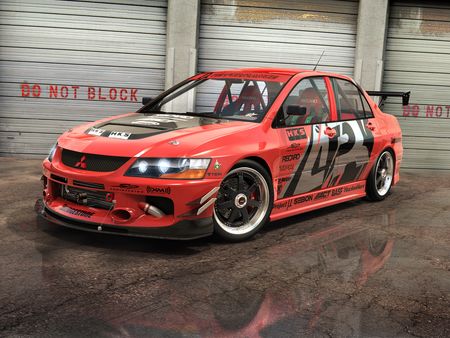Q
Is the GLC a good family car?
The GLC makes an excellent family vehicle. It offers a spacious interior that comfortably seats five passengers, while the 40:20:40 split-folding rear seats provide flexibility for accommodating both passengers and cargo. The generous trunk space easily accommodates strollers, groceries, or luggage for family trips.
In terms of safety, the GLC is equipped with a comprehensive array of standard safety features, including multiple airbags, an anti-lock braking system (ABS), and stability control. Advanced driver assistance systems such as lane departure warning, active braking, and blind-spot monitoring add an extra layer of safety.
Performance-wise, its engine offers ample power for everyday driving and highway merging. The ride quality is comfortable, with a smooth suspension system that adeptly handles bumps and uneven surfaces. The interior is finely crafted, featuring high-quality materials and modern technology. The infotainment system is user-friendly, making it easy to connect devices for entertainment.
However, it's worth noting that, compared to some hybrid or electric vehicles, the GLC may have relatively higher fuel consumption. Additionally, its luxury positioning may result in higher maintenance and insurance costs. Overall, weighing its pros and cons, the GLC is a strong choice for families seeking a comfortable, safe, and stylish vehicle.
Special Disclaimer: This content is published by users and does not represent the views or position of PCauto.
Related Q&A
Q
Does GLC 2023 have a sunroof?
The 2023 Mercedes-Benz GLC in the Malaysian market is indeed equipped with a Panoramic Sunroof. This feature comes as standard in the high-end versions of the GLC, providing excellent lighting and ventilation inside the vehicle. At the same time, it enhances the overall luxury feel and the riding experience of the car. The panoramic sunroof is especially popular in tropical-climate regions like Malaysia, as it allows passengers to enjoy a wider view while avoiding direct sunlight. As a luxury SUV, the sunroof design of the Mercedes-Benz GLC not only focuses on aesthetics but also uses heat-insulating and UV-resistant glass to ensure in-car comfort.
In addition, the 2023 GLC is also equipped with the advanced MBUX infotainment system and a variety of driving assistance functions, further improving the convenience of driving and riding. If you have any questions about the operation or maintenance of the GLC's sunroof, it is recommended to refer to the owner's manual or consult an authorized dealer to ensure the proper use and maintenance of this feature.
Q
What is the top variant of Mercedes GLC 2023?
In the Malaysian market in 2023, the top-spec model of the Mercedes-Benz GLC is the Mercedes-Benz GLC 300 4MATIC AMG Line. This model is equipped with a 2.0-liter turbocharged four - cylinder engine, with a maximum output power of 258 horsepower and a peak torque of 400 Nm. It is paired with a 9-speed automatic transmission and the 4MATIC all - wheel drive system, offering excellent power performance and handling experience. The AMG Line package includes a sporty exterior design, exclusive wheels, and interior trims, further enhancing the sense of luxury and sporty atmosphere.
In addition, the GLC 300 4MATIC AMG Line is also equipped with the advanced MBUX infotainment system, a panoramic sunroof, an intelligent driving assistance system, and a variety of luxury features, providing Malaysian consumers with a high-end driving and riding experience. It's worth mentioning that the GLC series has always been well-received in the Malaysian market. It combines luxury, technology, and practicality, making it suitable for family use or business needs. Meanwhile, Mercedes-Benz's after-sales service network in Malaysia is also quite comprehensive, providing reliable support for car owners.
Q
Does the Mercedes GLC 2023 have air suspension?
Among the versions of the 2023 Mercedes-Benz GLC available in the Malaysian market, the standard configuration does not include an air suspension system. However, some high-end models or optional packages may offer the AIRMATIC air suspension as an optional item. You need to confirm the specific details according to the configuration list provided by local dealers. The air suspension adjusts the air pressure to change the vehicle's body height and stiffness. It can improve comfort (such as filtering out bumps) or enhance sportiness (lowering the body at high speeds), which is suitable for the diverse road conditions in Malaysia. But it should be noted that its maintenance cost is higher than that of traditional spring suspensions. If users are pursuing a higher-quality driving experience, they can consult authorized dealers for details about the optional item. At the same time, compare the suspension technology features of luxury SUVs of the same class from German or Japanese brands, such as BMW's electronic suspension or Lexus's Adaptive Variable Suspension, and make a choice based on their budget and needs. The hot and rainy climate in Malaysia places high requirements on the durability of the suspension system. Regularly checking the seals and air pressure pipelines is the key to maintaining the performance of the air suspension.
Q
How much is the GLC 300 in 2023?
In the Malaysian market, the official starting price for the 2023 Mercedes-Benz GLC 300 is around RM390,000 to RM430,000, depending on the model year, specific configuration options, and dealer discounts. It is highly recommended to consult authorized dealers directly for the most accurate and up-to-date quotations. As a representative of Mercedes-Benz's mid-size luxury SUVs, the GLC 300 is equipped with a 2.0-liter turbocharged engine featuring a 48V mild-hybrid system (MHEV), delivering 258 hp. It comes standard with the 4MATIC all-wheel-drive system, balancing power and handling stability. This model is quite popular in Malaysia. Its advantages include exquisite interior craftsmanship, the advanced MBUX multimedia system, and a comprehensive suite of active safety features such as adaptive cruise control and lane-keeping assist. It is worth noting that competitors in the same class, like the BMW X3 and Audi Q5, are also strong choices. However, the GLC 300 is often perceived to hold an edge in brand prestige and the creation of a luxury ambiance. When purchasing in Malaysia, prospective buyers should factor in additional costs such as road tax and insurance. It is also advisable to inquire about promotional activities that some dealers may offer, such as complimentary maintenance packages.
Q
How much is a used Mercedes GLC 2023?
In Malaysia, the prices of used 2023 Mercedes-Benz GLCs vary depending on factors such as the vehicle's condition, mileage, configuration, and warranty status. Currently, the market prices range from approximately RM250,000 to RM350,000, specifically depending on whether the vehicle is equipped with options like the AMG package, high-end audio system, or driving assistance systems. When purchasing a used GLC, it is advisable to check the vehicle's maintenance records and whether it is still within the original factory warranty to ensure its reliability.
As a luxury mid-size SUV, the Mercedes-Benz GLC is renowned for its exquisite interior, excellent driving experience, and advanced safety technology. The 2023 model is even equipped with an updated MBUX infotainment system, enhancing the user experience. Moreover, there has always been a high demand for Mercedes-Benz models in the Malaysian used-car market, especially popular models like the GLC, which have relatively good resale values. However, it is recommended to conduct transactions through officially certified used-car channels or reputable dealers before buying a car to obtain more comprehensive after-sales support.
Q
What kind of engine is in the GLC 2023?
The 2023 Mercedes-Benz GLC offers both gasoline and diesel engine options in the Malaysian market. The gasoline version is equipped with a 2.0-liter four-cylinder turbocharged M254 engine, which comes with a 48V mild-hybrid system. It has a maximum output power of 258 horsepower and a peak torque of 400 Nm. This powertrain not only improves fuel economy but also optimizes the power response at low speeds.
The diesel version, on the other hand, uses a 2.0-liter four-cylinder turbocharged OM654 engine, with a maximum power of 194 horsepower and a peak torque of 440 Nm. It's suitable for consumers who focus on long-distance driving and fuel efficiency.
It's worth mentioning that the 48V mild-hybrid technology has become an important development direction for Mercedes in recent years. It can provide additional assistance when the vehicle starts and drives at low speeds, and also supports functions like coasting with the engine off, further reducing fuel consumption. For Malaysian consumers, this technology can not only meet their daily driving needs but also adapt to the relatively congested local traffic environment.
In addition, the entire 2023 GLC lineup is standard with a 9-speed automatic transmission (9G-TRONIC), which shifts smoothly and efficiently, providing a comfortable driving experience whether it's for city commuting or highway cruising.
Q
Is the 2023 GLC a hybrid?
In 2023, the Mercedes-Benz GLC (model X254) does offer a hybrid version in the Malaysian market. Specifically, it's the GLC 300e 4MATIC plug-in hybrid electric vehicle (PHEV). This model is equipped with a combination of a 2.0- liter turbocharged engine and an electric motor. The combined system output reaches 313 horsepower, and it has an all-electric range of about 100 kilometers (WLTP standard). It's suitable for short-distance commuting and allows users to enjoy the tax incentives provided by the Malaysian government for hybrid vehicles.
Apart from the hybrid version, the Malaysian market has also introduced the gasoline-powered GLC 200 and GLC 300 in parallel to meet the needs of different consumers. Hybrid technology is an important trend in the current automotive industry as it can effectively reduce fuel consumption and emissions. Mercedes-Benz's PHEV system combines power performance and environmental advantages. You can charge it using a household socket or a public charging pile, and it's highly practical given the gradually improving charging infrastructure in Malaysia.
If you're considering a hybrid vehicle, it's recommended to evaluate based on your daily driving mileage and charging convenience. Also, compare it with other luxury brand competitors such as the plug-in hybrid version of the BMW X3 or the Volvo XC60 Recharge. However, keep in mind that the actual experience may vary depending on driving habits and road conditions.
Q
What is the difference between GLC 2023 and 2024?
The main differences between the 2023 and 2024 Mercedes-Benz GLC models are concentrated on the optimization of technological configurations and the powertrain. The 2024 model comes standard with the updated MBUX infotainment system in the Malaysian market, which supports more natural voice control functions. At the same time, an upgraded version of the 48V mild-hybrid system is introduced to some models, improving fuel economy by about 5%. In addition, the headlight group uses more advanced digital lighting technology, providing a clearer night vision.
For Malaysian consumers, the 2024 model also optimizes the air-conditioning system for the tropical climate and adds a wireless Android Auto connection function and has a relatively more advantageous price.
It's worth noting that Mercedes-Benz usually adjusts the suspension tuning according to local road conditions in the Southeast Asian market, and both models continue this tradition. The 2024 model further enhances the chassis's adaptability to Malaysia's rainy weather.
When considering the resale value of used cars, in the Malaysian market, the price of the old model usually drops slightly after the new model is released. However, due to the high brand recognition, the Mercedes-Benz GLC series always performs better in terms of resale value than its peers.
Q
How often should a Mercedes GLC 2024 be serviced?
According to Mercedes-Benz's official maintenance recommendations, under normal operating conditions in Malaysia, the 2024 GLC should undergo regular maintenance every 10,000 kilometers or 12 months, whichever comes first. The hot and humid climate in Malaysia, along with the congested urban traffic, may accelerate the wear and tear of engine oil and filters. Therefore, it is recommended that car owners shorten the maintenance interval to every 8,000 - 10,000 kilometers. Special attention should be paid to checking the air - conditioning system, brake fluid, and battery status.
The turbocharged engine in this model has high requirements for engine oil quality. It is essential to use fully synthetic engine oil that meets the MB - Approval 229.51/229.52 standards. In addition to regular maintenance, it is advisable to check the wheel alignment and brake pad thickness every 20,000 kilometers. Before the rainy season, pay special attention to the sunroof drain pipes and anti - rust treatment of the chassis.
The Service Care package offered by authorized dealers in Malaysia usually includes 15 core inspection items, which comprehensively cover the inspection of the transmission system, electronic devices, and safety configurations. If you often drive long distances or in dusty environments, you may consider replacing the air filter earlier.
It should be noted that strictly following the maintenance manual not only helps maintain the vehicle's optimal performance but also extends the original factory warranty. For hybrid models, it is even more crucial to conduct special inspections of the high - voltage system on schedule.
Q
How long will a GLC 2024 last?
The service life of the 2024 Mercedes-Benz GLC depends on various factors, including daily maintenance, driving habits, as well as the road conditions and climate in Malaysia. If you regularly maintain the vehicle according to the manufacturer's recommendations, use original parts, and avoid aggressive driving, the GLC 2024 can usually travel over 200,000 kilometers, or even longer. The high - temperature and humid weather in Malaysia may have a certain impact on the vehicle's electronic components and rubber parts. It is recommended to pay special attention to the maintenance of the air - conditioning system and door seals.
The key to extending the vehicle's life also includes regularly replacing fluids such as engine oil and brake fluid, and promptly addressing minor issues to prevent them from worsening. Mercedes - Benz vehicles are generally known for their durability and high quality. The advanced technologies equipped in the GLC 2024, such as the 48V mild - hybrid system, also help reduce engine wear.
For users in Malaysia, it is very important to choose a regular Mercedes - Benz authorized service center for maintenance, as they are more familiar with the impact of the local environment on the vehicle and can provide professional maintenance advice. In addition, when the vehicle is parked for a long time, it is recommended to start it regularly to keep the battery and mechanical components in good condition. With proper use and maintenance, the GLC 2024 can fully meet the long - term usage needs of Malaysian car owners.
Latest Q&A
Q
Toyota Hiace how many seats
The Toyota Hiace is a staple in Malaysia's commercial and family vehicle scene, with seating options that vary by trim. The standard models, like the Hiace Van, typically offer 12 to 15 seats—perfect for commercial shuttle services or group outings. On the flip side, the more upscale variants such as the Hiace Super Grandia trim down to 9 to 11 seats, prioritizing comfort with premium upholstery and rear air-conditioning, ideal for family trips or business reception. It is worth noting that some aftermarket shops also offer custom seating configurations, such as adjusting to 13 seats or reducing to 8 seats to flexibly adapt to different uses. For Malaysian buyers, the Hiace's biggest draws are its legendary durability, high ground clearance that handles local road conditions like a champ, and wallet-friendly maintenance costs. The diesel engine variants, in particular, stand out for their impressive fuel efficiency. For the most accurate specs, though, your best bet is to hit up a Toyota Malaysia authorized dealer. They can walk you through the latest model year details, including safety features like ABS and dual airbags—stuff that could definitely sway your final purchase call.
Q
How many models does Toyota Hiace have
The Toyota Hiace is a total workhorse and family favorite here in Malaysia, killing it in both commercial and personal use. You’ll mainly find a few go-to variants cruising our roads: the standard Hiace Van, the Hiace Commuter (that’s the people-hauler), and the top-dog Hiace Super Grandia (the luxury liner). These aren’t just badge swaps—they’re built for different jobs. The Hiace Van? It’s all about getting cargo from A to B, no frills, just space. But the Commuter and Super Grandia? They’re where comfort takes the wheel, packing nicer seats, better air-con, and all that extra kit to keep passengers happy.
Under the hood, Toyota’s got you covered with diesel and petrol engine options, so whether you’re after torque for heavy loads or something smoother for daily drives, there’s a Hiace for that. Malaysians swear by this van for a reason—its legendary durability and rock-solid resale value are huge wins. Plus, that cavernous interior and flexible seating? Perfect for everything from running a business to shuttling the whole family (and then some).
If you’re thinking of adding a Hiace to your fleet or driveway, do yourself a favor: figure out what you’ll *really* use it for, then hit up your nearest authorized dealer for a test drive. Trust me, you’ve gotta feel that space and drive to get the full picture.
Q
Mitsubishi Xpander made in which country
The Mitsubishi Xpander is a multi-purpose vehicle (MPV) primarily built in Indonesia, rolling off the lines at Mitsubishi Motors' local plant there. Since its launch back in 2017, this people-mover has struck a chord in Southeast Asian markets – Malaysia included – thanks to its roomy interior and all-around practicality.
The Xpander's design does a neat job balancing the agility needed for city hops with the space requirements of family getaways. Under the hood, you'll find a 1.5-liter MIVEC engine, which delivers smooth power and decent fuel efficiency – perfect for Malaysia's varied road conditions, whether you're navigating city streets or hitting the highway.
What really makes it stand out for Malaysian families, though, are those thoughtful touches: the generous ground clearance that handles those unexpected potholes, and the super flexible seating arrangements that let you juggle passengers and cargo with ease. Being purpose-built for Southeast Asia, the Xpander nails the local adaptations. Think a robust air conditioning system that laughs at our tropical heat, and interior materials that can take the daily grind – little wonder it's a top pick among Malaysian buyers.
If the Xpander has piqued your interest, swing by your nearest Mitsubishi dealership for a test drive. There's no better way to get a feel for how it drives and just how practical it really is.
Q
how many seater is Mitsubishi Xpander
The Mitsubishi Xpander has carved out a solid following in Malaysia's MPV scene, and it's easy to see why. This 7-seater is a hit with families, thanks to its roomy interior and smartly designed, flexible seating. The 2+3+2 layout works well – the second row slides back and forth to free up legroom, while the third row is perfect for kids or adults on shorter trips. Need more cargo space? Just fold those rear seats down, and you've got plenty of room for whatever you're hauling.
Under the hood, there's a 1.5-liter MIVEC naturally aspirated engine, paired with either a 4-speed auto or 5-speed manual gearbox. It's not about speed here; it's about that smooth, easy drive for daily use and keeping fuel costs in check – exactly what family buyers want.
Practical touches don't stop there. You get handy features like a multifunction steering wheel, a touchscreen infotainment system, and a reverse camera, all of which make life behind the wheel that bit easier.
What really makes the Xpander stand out in Malaysia, though, is its whole package. It's priced reasonably, Mitsubishi's known for building reliable cars, and their after-sales network here is pretty extensive. If you're a consumer who prioritizes space and getting good value for your money, this is a solid pick in the practical family MPV segment.
Q
how much is the Mitsubishi Xpander
The Mitsubishi Xpander's pricing in Malaysia varies depending on the trim level and specifications. The entry-level Xpander Standard starts at approximately RM92,890, while the higher-spec Xpander Premium comes in at around RM99,890. Actual prices may fluctuate based on dealer promotions or optional extras selected. This 7-seater MPV has struck a chord with local families thanks to its spacious interior, practicality, and strong value for money. Under the hood, you'll find a 1.5L MIVEC naturally aspirated engine churning out 105PS and 141Nm, paired with a 4-speed automatic transmission. Fuel efficiency is rated at around 6.6L/100km. Convenience features include LED daytime running lights and power-folding side mirrors.
Notably, the Xpander boasts a generous 205mm of ground clearance, making it better suited than your average MPV for those rougher patches of road you might encounter around Malaysia. Its "Dynamic Shield" family face also gives it a distinct and recognizable look on the road. When considering rivals in the same segment, the Toyota Avanza or Honda BR-V might come to mind, but the Xpander holds an edge in terms of third-row space and cargo-carrying versatility. It's always a good idea to head down to an authorized showroom for a test drive to get a real feel for how it handles, and to check out the latest promotions – things like low-interest financing or complimentary service packages could sweeten the deal.
View MoreRelated News

Mercedes-Benz releases teaser image of electric GLC, featuring a retro illuminated grille
RobertAug 5, 2025

Mercedes-Benz invests in an autonomous driving technology company under Geely named Qianli
AshleySep 25, 2025

Benz launches its first car equipped with solid-state batteries, capable of traveling 1,205 kilometers on a full charge
WilliamSep 10, 2025

Mercedes-Benz electric vehicle design language will also undergo a major change to respond to BMW Neue Klasse.
JamesSep 9, 2025

Mercedes-Benz CLA Electric Opens for Pre-Orders with Over 700km Range
AshleyAug 14, 2025
View More


















Pros
Cons